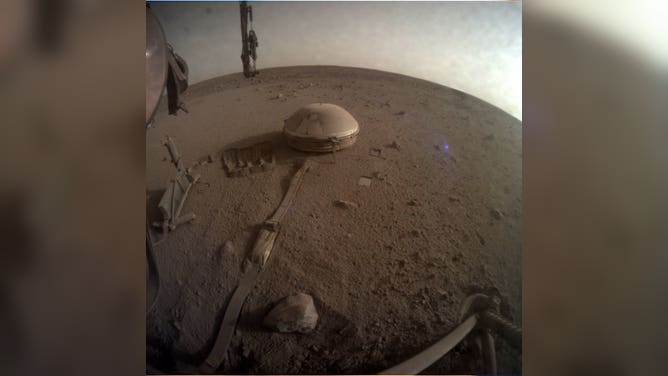Mars gets a boost as Earth 2.0 candidate after scientists say it still has liquid water
This source of water may be difficult for future human missions to use. According to the study, Mars’ mid-crust may be water-saturated at a depth starting at around 3,300 feet.
NASA crew leaves Mars simulator for first time in more than a year
FILE VIDEO: Four volunteers entered the habitat on June 25, 2023, and were allowed to leave on July 6. The 1,700-square-foot enclosure was in a facility at NASA’s Johnson Space Center and was designed to simulate a Mars mission.
NASA’s InSight mission may no longer operate on Mars, but the little lander continues to advance what scientists know about the Red Planet's inner workings.
A new study using NASA InSight data found that Mars likely still has liquid water. Although frozen water is known to be at the poles of Mars, this new research suggests that the Red Planet is more habitable than originally believed.
COULD DUST BE USED TO COOL THE RED PLANET TO SUSTAIN LIFE?
Mars was once a planet with many bodies of water more than 3 billion years ago. However, it’s believed that much of the water was lost to space, lying just under the planet's surface or frozen.
NASA's InSight lander mission ended in 2022 after unsuccessfully waiting on a dust devil to blow off Martian dirt from its solar panels. Years later the mission data continues to lead to discoveries.

The last photo taken by NASA's Mars InSight Lander sent back around Dec. 15, 2022. (Image: NASA)
(NASA)
Using InSight measurements and rock physics models, geophysicists found that Mars’ crust didn’t need to lose most of its water to atmospheric escape.
"Liquid water in the pores of the mid-crust also requires high enough permeability and warm enough temperatures in the shallow crust to permit exchange between the surface and greater depths. While available data are best explained by a water-saturated mid-crust, our results highlight the value of geophysical measurements and better constraints on the mineralogy and composition of Mars’ crust," the study authors wrote.

The bright white region of this image shows the icy cap that covers Mars’ south pole, composed of frozen water and frozen carbon dioxide. ESA’s Mars Express imaged this area of Mars on Dec. 17, 2012, in infrared, green and blue light, using its High Resolution Stereo Camera.
(ESA/DLR/FU Berlin/Bill Dunford)
However, this inner source of water may be difficult for future human missions to use. According to the study, Mars’ mid-crust may be water-saturated at a depth starting at around 3,300 feet.
LISTEN TO A MARTIAN DUST DEVIL: THE FIRST RECORDING EVER COULD BE THE KEY TO FUTURE MISSIONS
According to UC San Diego’s Scripps Institution of Oceanography, the leading research group on the study, the new findings are the best evidence that the planet still has liquid water in addition to the known frozen poles.
"Understanding the Martian water cycle is critical for understanding the evolution of the climate, surface, and interior," said study author Vashan Wright, a geophysicist at Scripps Institution of Oceanography. "A useful starting point is to identify where water is and how much is there."
